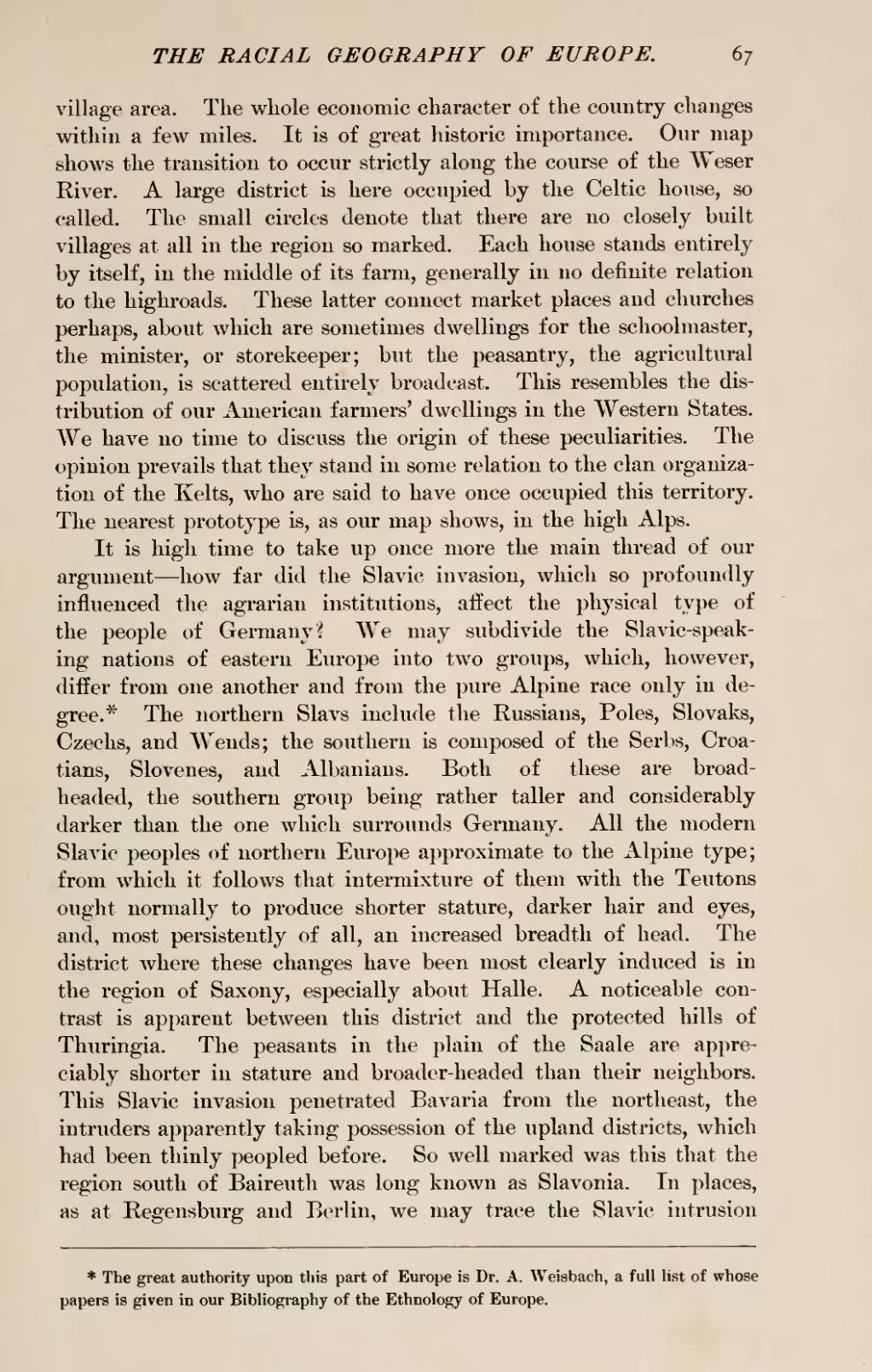village area. The whole economic character of the country changes within a few miles. It is of great historic importance. Our map shows the transition to occur strictly along the course of the Weser River. A large district is here occupied by the Celtic house, so called. The small circles denote that there are no closely built villages at all in the region so marked. Each house stands entirely by itself, in the middle of its farm, generally in no definite relation to the highroads. These latter connect market places and churches perhaps, about which are sometimes dwellings for the schoolmaster, the minister, or storekeeper; but the peasantry, the agricultural population, is scattered entirely broadcast. This resembles the distribution of our American farmers' dwellings in the Western States. We have no time to discuss the origin of these peculiarities. The opinion prevails that they stand in some relation to the clan organization of the Kelts, who are said to have once occupied this territory. The nearest prototype is, as our map shows, in the high Alps.
It is high time to take up once more the main thread of our argument—how far did the Slavic invasion, which so profoundly influenced the agrarian institutions, affect the physical type of the people of Germany? We may subdivide the Slavic-speaking nations of eastern Europe into two groups, which, however, differ from one another and from the pure Alpine race only in degree.[1] The northern Slavs include the Russians, Poles, Slovaks, Czechs, and Wends; the southern is composed of the Serbs, Croatians, Slovenes, and Albanians. Both of these are broad-headed, the southern group being rather taller and considerably darker than the one which surrounds Germany. All the modern Slavic peoples of northern Europe approximate to the Alpine type; from which it follows that intermixture of them with the Teutons ought normally to produce shorter stature, darker hair and eyes, and, most persistently of all, an increased breadth of head. The district where these changes have been most clearly induced is in the region of Saxony, especially about Halle. A noticeable contrast is apparent between this district and the protected hills of Thuringia. The peasants in the plain of the Saale are appreciably shorter in stature and broader-headed than their neighbors. This Slavic invasion penetrated Bavaria from the northeast, the intruders apparently taking possession of the upland districts, which had been thinly peopled before. So well marked was this that the region south of Baireuth was long known as Slavonia. In places, as at Regensburg and Berlin, we may trace the Slavic intrusion
- ↑ The great authority upon this part of Europe is Dr. A. Weisbach, a full list of whose papers is given in our Bibliography of the Ethnology of Europe.
